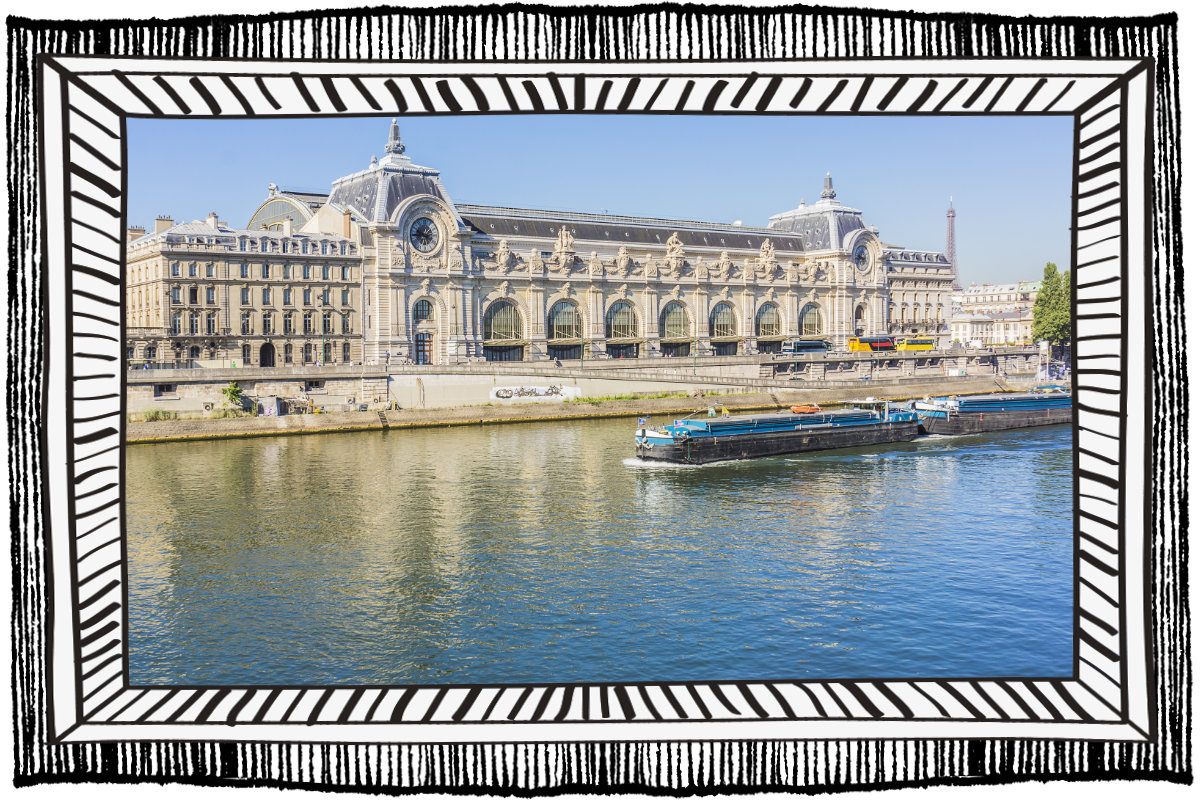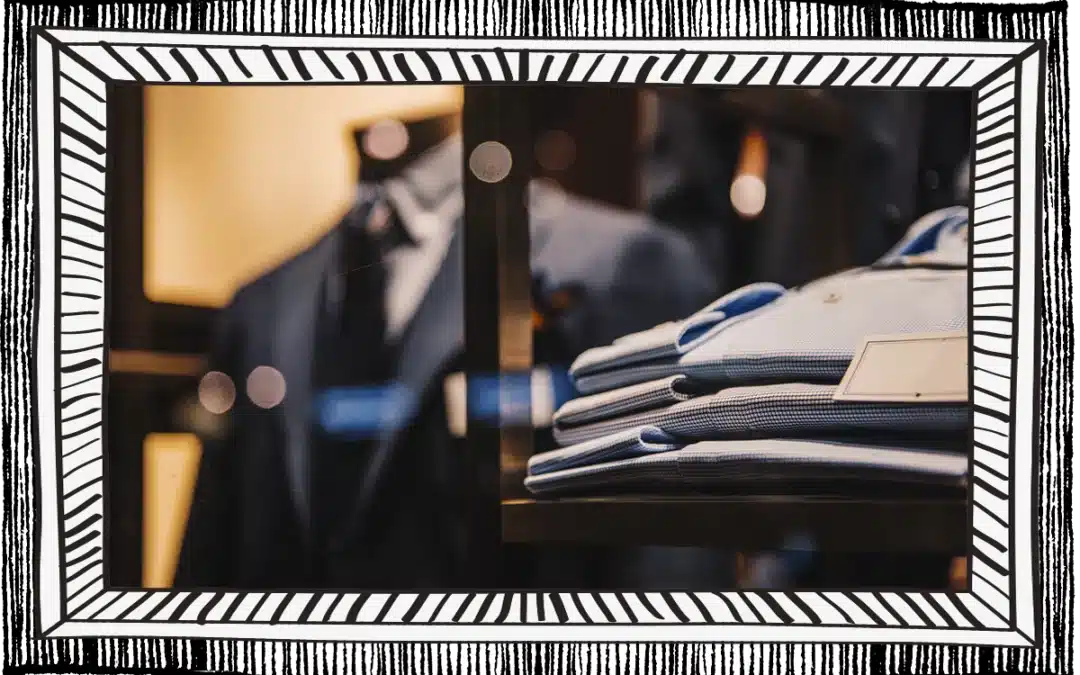Let us walk you through the fascinating history of the Musée d’Orsay. Back to the year 1900. To mark the World’s Fair held in Paris, celebrating both the turn of the century and the coming together of peoples, it was decided that a railway station should be built on the ruins of the Palais d’Orsay. And after the incredible architectural feat that was the Eiffel Tower, unveiled at the 1889 Fair, expectations were high.
Victor Laloux wins out over both of his competitors
Victor Laloux knew 2 years before the inauguration of the World’s Fair that he had won the Orsay railway station construction project by a wide margin, ahead of Lucien Magne and Émile Bénard. He headed off the competing gare d’Austerlitz bid thanks to a more central location in the 7th arrondissement of Paris Thus allowing delegations through to the very heart of the city.
His mission was to build something in keeping with the refined elegance of the immediate surroundings and neighbourhood. After all, we’re talking about the banks of the Seine, opposite the jardin des Tuileries and near the Palais du Louvre.
It took this eminent Fine Arts ambassador just 2 years to build this building and the nearby hôtel d’Orsay, while allowing for the use of electricity, which was in its infancy.
The station, the war and the Presidents
Up until just before the second world war, the railway station did its job as a travel hub serving western France. The hotel hosted meetings and political events, and offered accommodation to passengers.
But by 1939, due to the electrification of railway lines and platforms and the commissioning of longer trains, Orsay railway station was obsolete. So it was only used to deliver parcels to soldiers and, towards the end of the war, for prisoner transport.
This place steeped in history limped on and served as a film set, until its hotel was closed down in 1973.
The President at the time, Georges Pompidou, gave some thought to the idea of turning it into a museum.
As soon as he became President in 1974, Valéry Giscard d’Estaing took over Pompidou’s idea and secured the financing to make the site his major legacy undertaking, which he successfully put to a vote in 1977.
Listed as a historic monument in 1978, the museum would not be inaugurated until 1986, under François Mitterrand, with his predecessor Giscard d’Estaing and Prime Minister Jacques Chirac in attendance.
Gae Aulenti was commissioned with the interior remodelling of the musée d’Orsay and the renovation of the building. She would salvage and incorporate the 12,000 tonnes of metalwork and 35,000 m² of glazing.
She played with natural and artificial light, of course, to show off the various works to their best advantage.
To find out more: discover the secret history of Paris’s monuments
The Musée d’Orsay’s incredible collection of paintings
The stated aim of opening this museum in Paris was to reunite collections that since the closure of the musée du Luxembourg had been dispersed between the musée du Louvre, the musée de l’Orangerie and the musée d’art moderne. Mainly naturalist, impressionist and 19th-century French works.
More places to discover with our guide to organising museum visits in the 7th arrondissement.
Impressionists
By way of anecdote, the Musée du Luxembourg was the first establishment to exhibit the works of impressionists of the late 19th and early 20th centuries, even though this movement had very little exposure. Thanks to the private collector Caillebotte, who was himself an artist, the museum was bequeathed works by Manet, Renoir, Degas, Monet and Millet, which brought them instant acclaim.
Post-impressionists
After the second world war, because there was a need to hang paintings in rooms that had been requisitioned by the Germans, a great many private donations allowed those of post-impressionist painters to be put on display at long last.
Paintings by major artists such as Van Gogh, Gauguin, Cézanne and Toulouse-Lautrec were hung in the galleries.
Back when it opened, the musée d’Orsay already had one of the finest permanent collections of impressionist works. Moreover, its collection is now the world’s largest, and has been supplemented thanks to the giving in lieu of payment system, i.e. the payment of inheritance tax by way of works of art. Thanks to which, L’origine du monde by Courbet and Déjeuner sur l’herbe by Monet are there for us to behold.
The musée d’Orsay has had its share of scandals
People visit the musée d’Orsay to see the sculptures, 19th century photographs and decorative art pieces. But the exponential growth in footfall there is also down to a number of risqué temporary exhibitions.
Masculin masculin, l’homme depuis 1800 (Masculine male, the male form since 1800)
“The male nudes and bare buttocks may offend the sensitive disposition of younger visitors” was the official byline of this exhibition, the aim of which was to explore the essence of male nudity in art. Whereas female nudity was on display all over with no disclaimer at all.
Naked beneath works by Courbet and Manet
Déborah de Curtis posed naked beneath L’Origine du monde and L’Olympia at the musée d’Orsay. She wanted to convey the feminist take on the nude female form, which she contended is subjective when painted by men. Well, it is This incident got her into an objective tangle with the law.
Sade, attaquer le soleil (attacking the sun)
The musée d’Orsay completely swept away the dusty image of painting and dismissed the concepts of beauty, ugliness, religion and morality in this exhibition. It was coupled with a highly risqué promotional film that stirred up a huge amount of hype in 2014, and was, of course, a great marketing win.
Victim of record footfall
Having registered 3.5 million visits per year for almost 40 years, the musée d’Orsay has pledged to reinvent itself by 2027 to offer an experience that’s more in keeping with today’s expectations. The works of art will be displayed within their political, economic and social context. The queues will be cut down, and new spaces created.
The Musée d’Orsay also has spaces available for hire, which are included in our selection of the most beautiful meeting rooms in Paris.
The museum is open Tuesday to Saturday, from 9.30 a.m. to 6 p.m. with evening opening on Thursdays until 9.45 p.m. It is closed to the public on Mondays.
We recommend enlisting a guide conférencier tour guide for your visit, to bypass the long queues.




